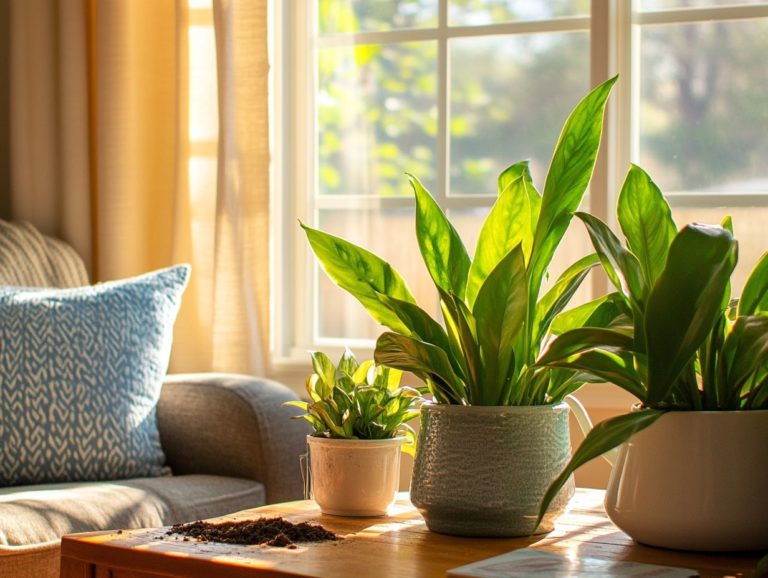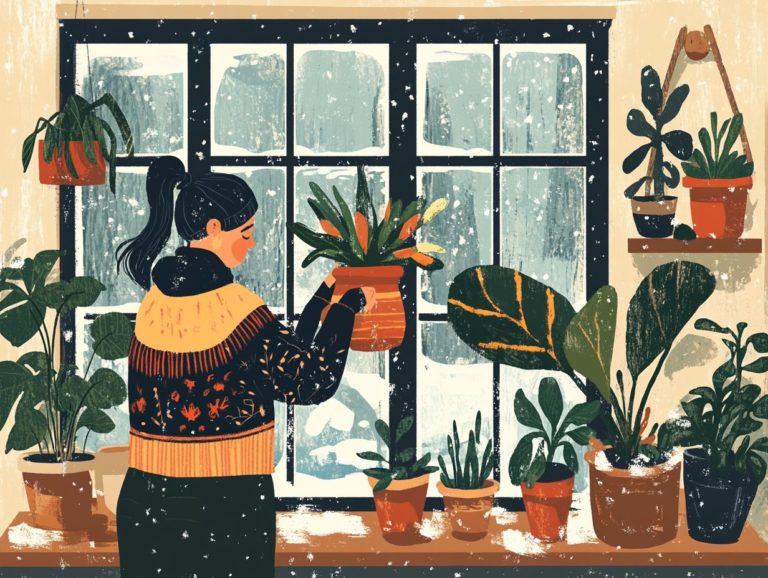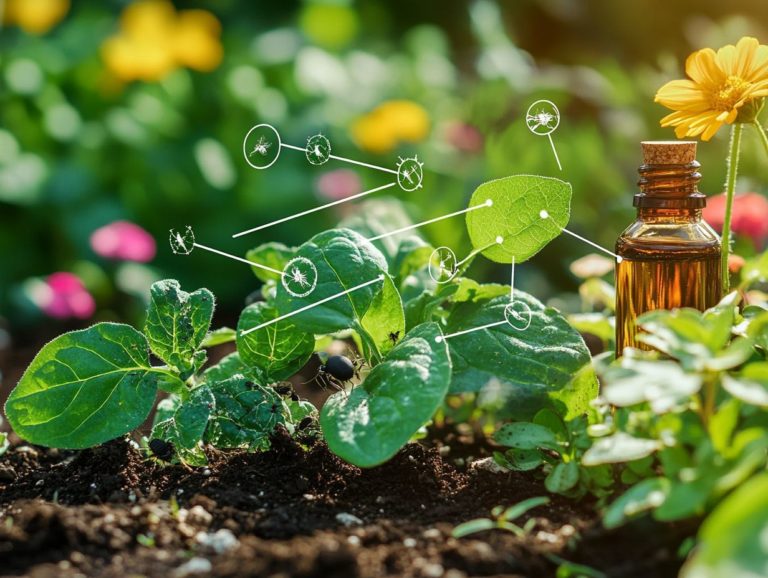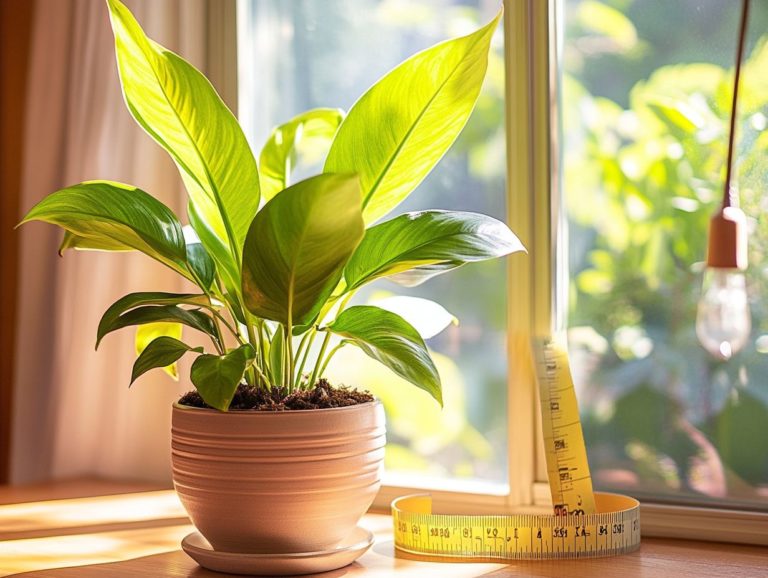Indoor Plant Pest Prevention Tips
Indoor plants bring color and life to your home, but they can also invite unwelcome pests into your sanctuary.
Recognizing the significance of pest prevention is essential for ensuring your greenery remains robust and flourishing.
This article explores the common pests that may target your indoor plants, helping you identify them and providing effective preventative strategies.
You ll also discover natural remedies for pest control and practical steps to take should an infestation arise.
Protect your plants and enjoy the vibrant beauty of your thriving indoor garden!
Contents
- Key Takeaways:
- The Importance of Indoor Plant Pest Prevention
- Common Indoor Plant Pests
- Preventative Measures for Indoor Plants
- Natural Remedies for Pest Control
- Dealing with an Infestation
- Frequently Asked Questions
- What are some common indoor plant pests to watch out for?
- How can I prevent indoor plant pests from infesting my plants?
- What are some natural methods for preventing indoor plant pests?
- How often should I water my indoor plants to prevent pests?
- What are some signs that my indoor plants may be infested with pests?
- What should I do if I notice pests on my indoor plants?
Key Takeaways:
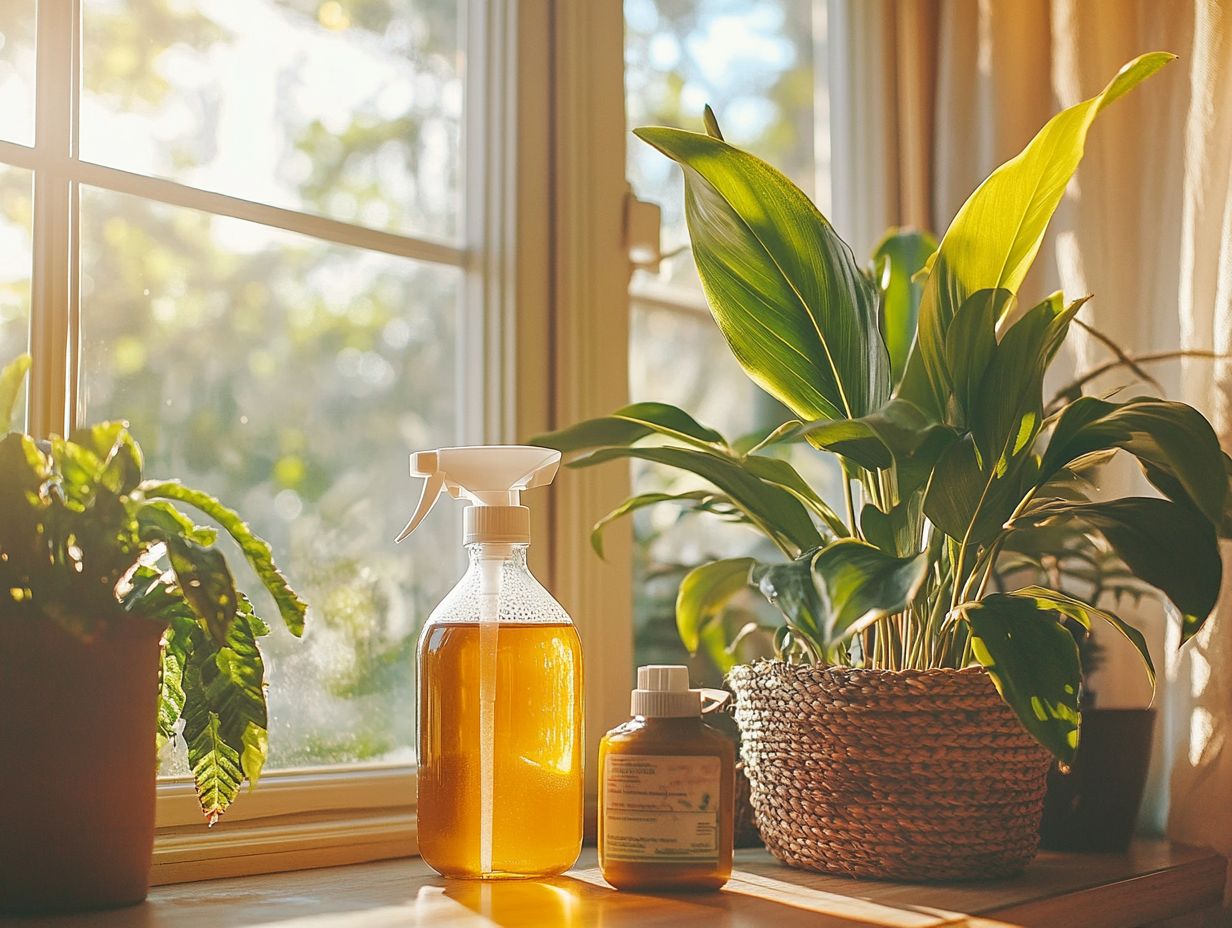
- Regular preventative measures are crucial for maintaining healthy indoor plants and preventing pest infestations.
- Knowing the common types of indoor plant pests and how to identify them can help in early detection and prevention.
- Natural remedies such as neem oil and dish soap can effectively control pests without harming your plants or the environment.
The Importance of Indoor Plant Pest Prevention
The significance of indoor plant pest prevention cannot be overstated. To maintain a flourishing indoor environment brimming with healthy houseplants, you must remain vigilant against potential pests that threaten your plants’ delicate health.
By recognizing the importance of preventive measures, you can safeguard your cherished greenery from common nuisances like aphids, mealybugs, and spider mites.
Why Preventing Pests is Essential
Preventing pests is crucial for preserving the health and vitality of your indoor plants. Infestations can cause irreversible damage and lead to a decline in overall plant wellness.
When unwelcome pests invade, the signs can be quite obvious, often appearing as wilting leaves or stunted growth. You may also notice the annoying presence of honeydew, a sticky substance made by some pests. This honeydew not only attracts more insects but can also result in complications like sooty mold.
By paying close attention to your indoor plants, you can make a significant difference. Early detection of these issues can prevent a minor problem from blossoming into a serious infestation, ultimately safeguarding your plants from greater harm and ensuring your indoor garden continues to flourish. For more tips, consider preventing pest infestations in indoor plants.
Common Indoor Plant Pests
Indoor plants can be vulnerable to a range of common pests, each posing distinct challenges to their health and care. Familiarizing yourself with these pests such as aphids, mealybugs, and spider mites is essential if you wish to cultivate a thriving collection of greenery.
Understanding their behaviors and impacts is key to ensuring your indoor garden flourishes.
Types of Pests and How to Identify Them
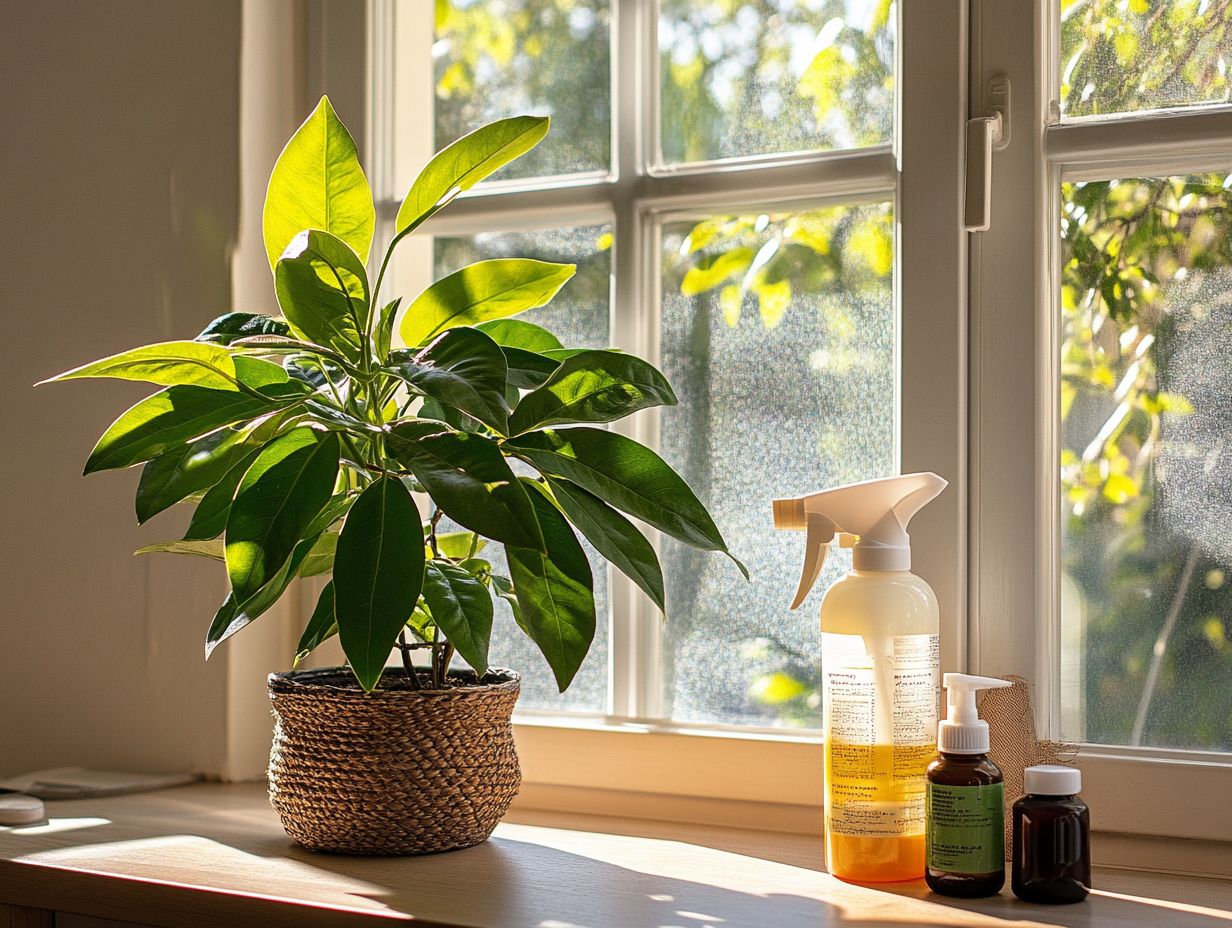
Identifying the types of pests that might invade your indoor plants is essential for effective pest management. This knowledge gives you the power to implement targeted control strategies without delay.
Common pests like aphids, mealybugs, and spider mites often find their way onto popular houseplants, each exhibiting unique characteristics that make early detection crucial. For example, aphids are small, pear-shaped insects typically found in clusters on new growth.
Mealybugs leave behind a cotton-like residue on leaves and stems. Spider mites, in contrast, produce fine webbing that s often noticeable on the undersides of leaves.
Regular inspections are crucial. Simply checking your plants for signs of discoloration, wilting, or visible damage can help you catch an infestation before it spirals out of control.
By keeping a vigilant eye on your vulnerable plants, you ensure that your interventions are timely and effective, keeping your indoor jungle thriving.
Preventative Measures for Indoor Plants
Implementing preventative measures for your indoor plants is essential to minimize the risk of pest infestations, fostering healthier and more resilient greenery.
By concentrating on key factors such as humidity levels, air circulation, and regular plant inspections, you can cultivate an environment that is far less susceptible to pest issues.
Start protecting your indoor garden today and watch it flourish!
Tips for Keeping Pests Away
To keep pests away from your indoor plants, using simple tips can enhance their health and deter any pest problems.
One effective approach is to quarantine new plants for a couple of weeks before introducing them to your existing collection. This step helps you spot any hidden pests early on. Cleaning pots thoroughly before planting is another crucial step that minimizes the risk of unwanted guests setting up shop.
Adjusting humidity levels and improving air circulation in your indoor space creates less favorable conditions for pests, making it tougher for them to thrive.
Taking these steps helps create a healthier environment for your plants, leading to vigorous growth and lush, vibrant foliage.
Natural Remedies for Pest Control
Natural remedies for pest control provide safe and effective solutions to keep your indoor plants healthy. By using these remedies, you can tackle pest problems without resorting to harsh chemicals.
These non-chemical approaches prioritize the wellbeing of your plants and foster a thriving indoor ecosystem, creating a harmonious environment for growth.
Safe and Effective Solutions

Using safe and effective pest control solutions is essential for fostering healthy indoor plants while minimizing your impact on the environment.
When exploring pest control options, consider methods that tackle infestations and nurture plant growth. For example, introducing beneficial insects like ladybugs can help combat aphid populations without harming your plants. Be aware of the signs your indoor plant has pests, and use natural sprays made from neem oil or insecticidal soap to provide a strong defense while being gentle on delicate leaves.
Regularly inspecting your plants and practicing proper watering techniques can further enhance their resilience against pests.
By integrating these approaches, you can cultivate a thriving indoor ecosystem that promotes both vitality and health.
Dealing with an Infestation
When facing a pest infestation, act quickly and decisively. Use a mix of both non-chemical and chemical control methods to restore your plants’ vibrant health.
Recognizing the signs of infestation early boosts your chances of successful treatment and recovery.
Steps to Take if Pests are Present
When pests invade, prompt action is crucial for managing the situation and protecting your indoor plants.
Start by thoroughly inspecting all parts of the affected plants, looking for signs like discolored leaves, sticky residues, or tiny critters.
If you confirm an infestation, you can choose from various methods to eliminate pests from handpicking to using insecticidal soap.
Assessing the severity of the issue is key, as this will guide your choice between chemical treatments for quicker results and non-chemical alternatives like introducing beneficial insects or using organic sprays, which are safer for the environment and your plants.
Frequently Asked Questions
What are some common indoor plant pests to watch out for?
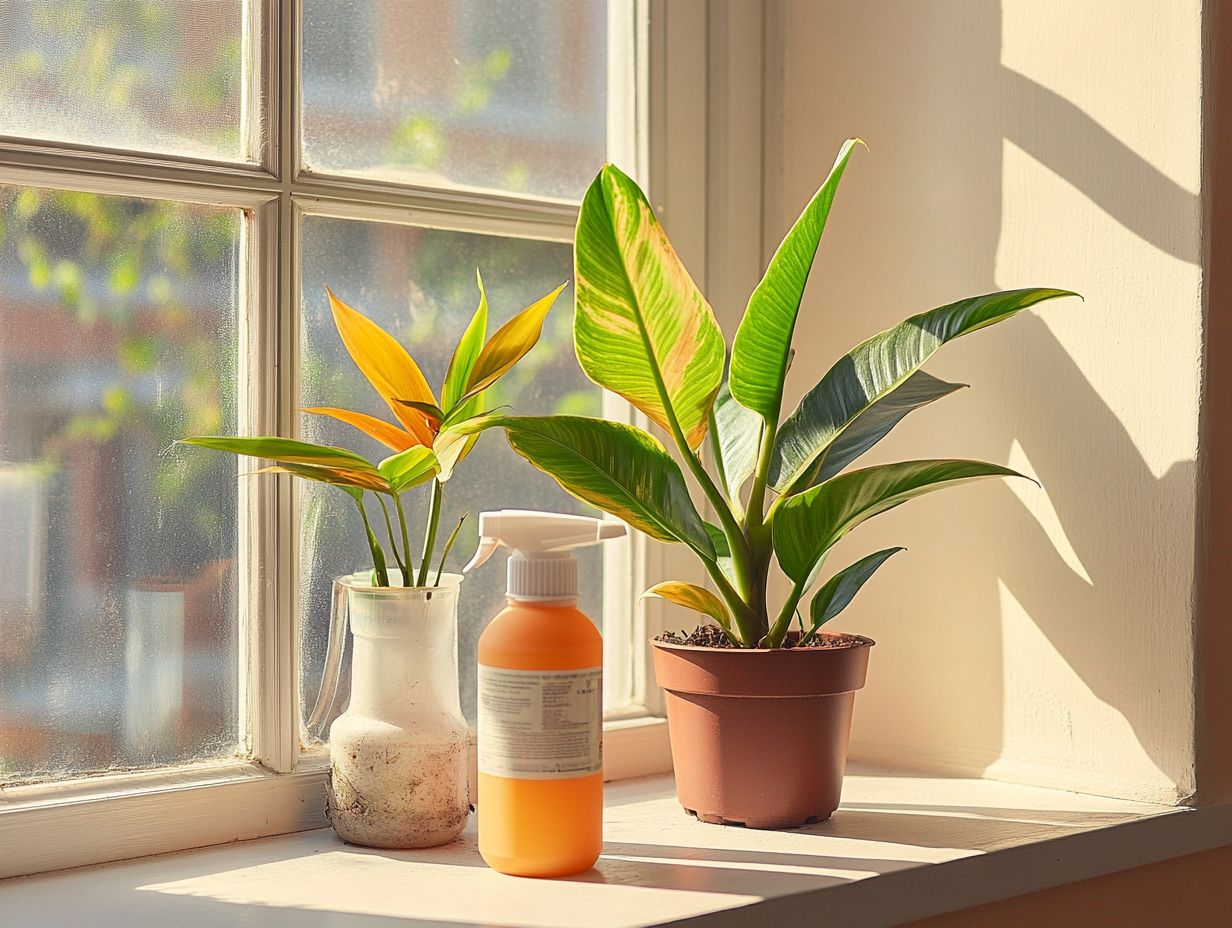
Common indoor plant pests include:
- Aphids
- Mealybugs
- Spider mites
- Fungus gnats
- Scale insects
How can I prevent indoor plant pests from infesting my plants?
To prevent indoor plant pests, regularly inspect your plants for any signs of infestation and quarantine any new plants for a few weeks before introducing them to your other plants.
What are some natural methods for preventing indoor plant pests?
You can use natural pest control methods such as neem oil, insecticidal soap, and diatomaceous earth. Introducing beneficial insects like ladybugs to your indoor garden can also help keep pests away.
How often should I water my indoor plants to prevent pests?
Watering your plants correctly keeps pests away! Only water when the top inch of soil is dry.
Overwatering creates a damp environment that pests love.
What are some signs that my indoor plants may be infested with pests?
Watch for yellowing or wilting leaves. Other signs include holes in leaves, sticky residue, and tiny bugs on the plant or in the soil.
What should I do if I notice pests on my indoor plants?
Act fast! If you see pests, keep the affected plant away from others.
Then, treat it with natural or chemical methods.

